Canadian Museum for Human Rights, Winnipeg
Manitoba, Canada
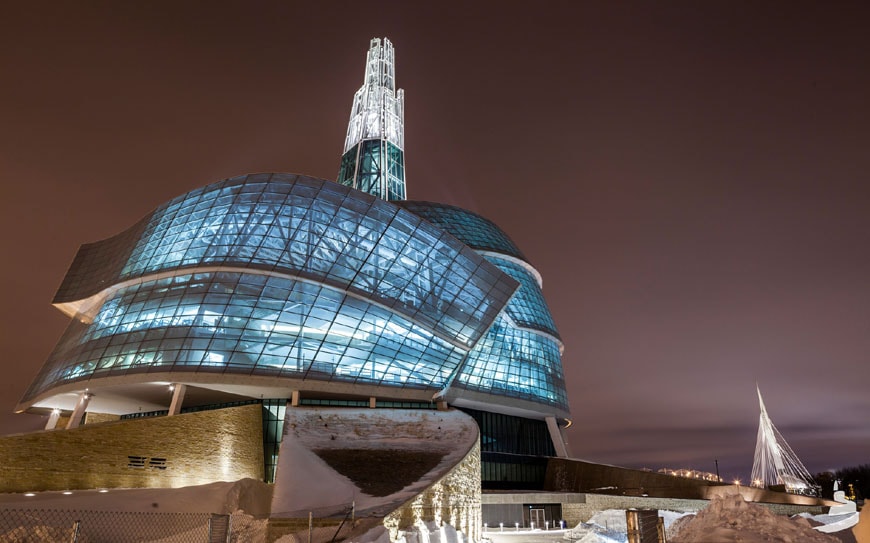
The Canadian Museum for Human Rights (CMHR) is a museum in Winnipeg, Manitoba, Canada, dedicated to the basic rights belonging to every human being.
Opened in 2014, the museum is housed in an iconic building designed by American architect Antoine Predock.
Overlooking the Red River, the place where the museum lies is very significant historically as it had been a meeting place for Aboriginal Peoples populations for thousands of years. Over time, more than 400,000 archaeological artifacts were found on the site.
The CMHR’s permanent exhibition encompasses eleven thematic galleries on six levels, connected by a series of glowing alabaster ramps and arranged around a central hall.
The museum is dedicated to human rights in a broad sense and is intended to provoke thought and conversation about the importance of treating all human beings with dignity and respect. Stories from past and present are relayed in diverse ways, with an international scope but a special focus on Canada and with special attention to cultural and ethnic minorities.
By means of multisensory installations, artifacts, artworks, photos, feature films, video clips, and interactive exhibits, the museum tells the human rights stories of many different groups, including people with disabilities, women, children, diverse racial groups, religious and linguistic minorities, Indigenous Peoples and those with diverse gender identities and sexual orientations – to name a few. Stories of inspiration, hope, and resilience are relayed along with accounts of human rights violations, with the message that everyone has a role to play in achieving human rights for all. What human rights actually are and how their complete achievement still has a long way to go, since the Universal Declaration of Human Rights.
The museum organizes live performances, special events, guided tours, and educational programs.
Along with the permanent core exhibition galleries, the museum includes educational spaces, theatres, a reference center, a boutique, and a restaurant. The museum building is topped by a 100-meter-high tower, from which it is possible to get a panoramic view of Winnipeg and the Prairie landscape beyond.
The Canadian Museum for Human Rights is accessible to visitors of all ages and abilities.
A beacon of hope: the Canadian Museum for Human Rights by Antoine Predock
Designing a museum that presents ideas more than a physical collection could be an intriguing, yet demanding, challenge for an architect.
Indeed, the integration between a building and the concept it embodies can be pushed to the limit. On the other hand, such complete integration requires a particularly skillful, and somehow aslant, approach to museum design.
The Canadian Museum for Human Rights (CMRH) in Winnipeg, the capital of the province of Manitoba, is the only museum in the world “dedicated to exploring the concept of human rights as a force for positive change”.
The museum is located in a historically important site, called The Forks, at the confluence of the Red and Assiniboine rivers; a meeting place for thousands of years for diverse groups of people, including First Nations. It is also the homeland of the Métis, who are the descendants of Aboriginal Peoples and Europeans. An on-site archeological excavation unearthed more than 400,000 artifacts, dating from the 12th century onward.
The architecture of the museum, conceived by American architect Antoine Predock, deeply reflects the historical and ideal complexity of its site as well as the principles behind the CMHR.
The 24,000-square-meter / 25,800-square-foot building is set upon four massive, limestone-clad “roots” that are seeded with Prairie tall grass.
The Museum’s galleries are housed inside a metaphorical “mountain” made of Tyndall stone – a 400 million-year-old type of limestone quarried from the Ordovician Red River Formation nearby.
The mountain houses eleven core galleries, stacked atop and alongside one another, connected through an impressive 800-meter / 2600-foot long zig-zagging ramp system clad in translucent alabaster. The building’s mountain feature is “wrapped” with a cloud-shaped glass envelope, conceived to transmit natural light from the southwest into the open interior space of the museum; the visual result is quite imposing.
The museum building is topped by the Israel Asper Tower of Hope, a glass spire that rises 100 meters above the ground, from which the visitors get a 360-degree overview of the surrounding landscape from an observation deck. Just beneath the tower, the visitors can immerse themselves in the “Garden of Contemplation”, a captivating interior garden made of basalt rock with pools of water and vegetation, inspired by the “Giant’s Causeway” volcanic formation in Northern Ireland.
The eleven thematic exhibition galleries, designed by renowned firm Ralph Appelbaum Associates, feature a fascinating ensemble of physical installations, such as the circular wooden theatre that presents perspectives of Indigenous Peoples in Canada about rights and responsibilities to humanity and the land. Photographs, immersive multimedia environments, interactive exhibits, soundscapes, 100 hours of full-length films, and video clips, artifacts, and works of art are also used to relay powerful human rights stories.
Live performances, debates, and learning programs are also an integral part of the museum experience and will be featured in the theaters and educational spaces of the museum.
Thanks to Maureen Fitzhenry, CMHR, for her great collaboration
All photos are courtesy of CMHR.
How our readers rate this museum (you can vote)
copyright Inexhibit 2024 - ISSN: 2283-5474

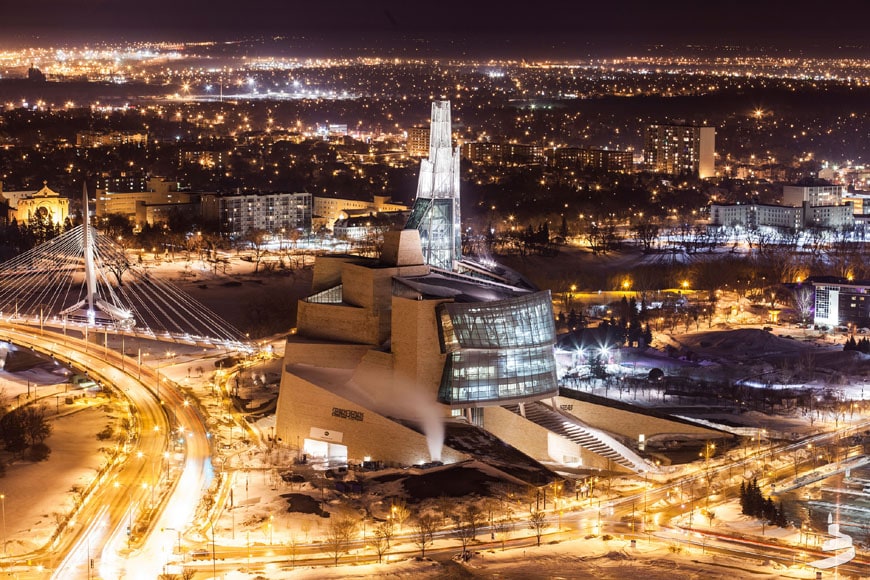




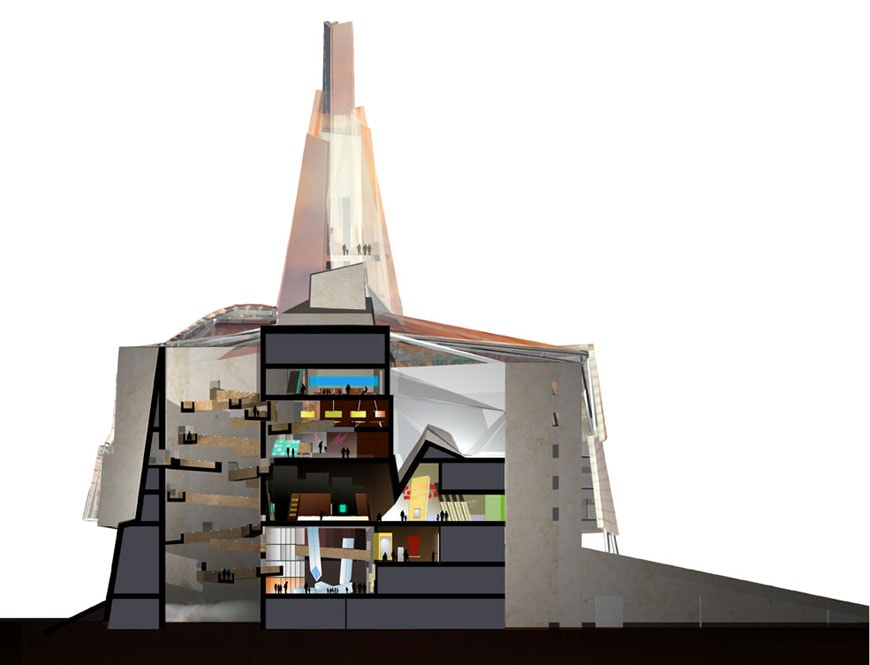




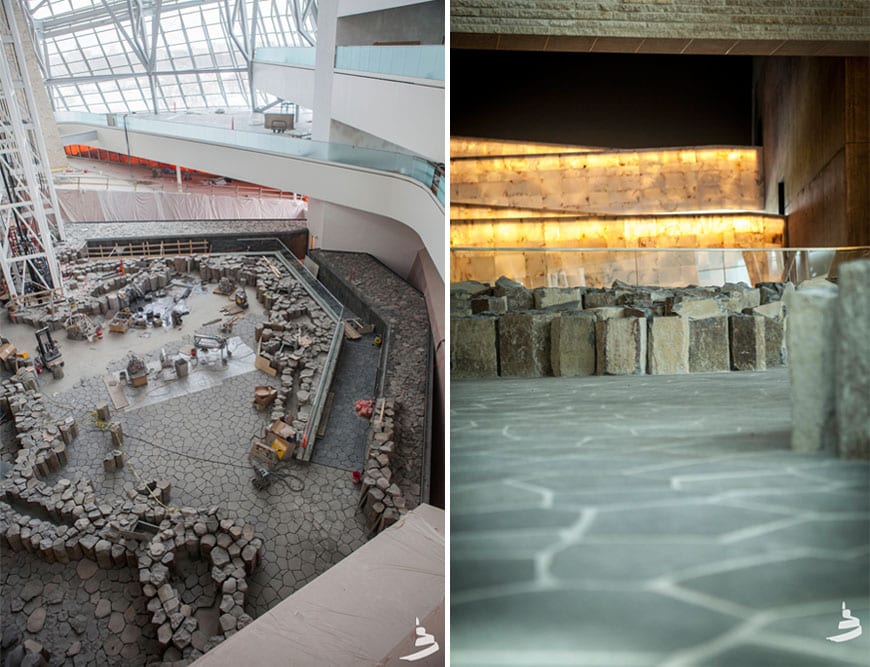

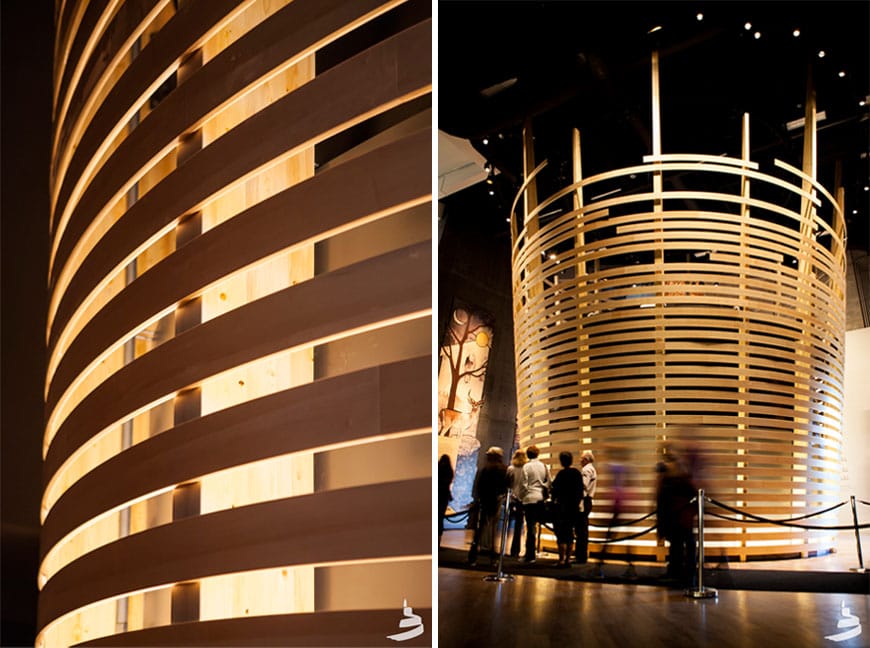





 (8 votes, average: 3.88 out of 5)
(8 votes, average: 3.88 out of 5)